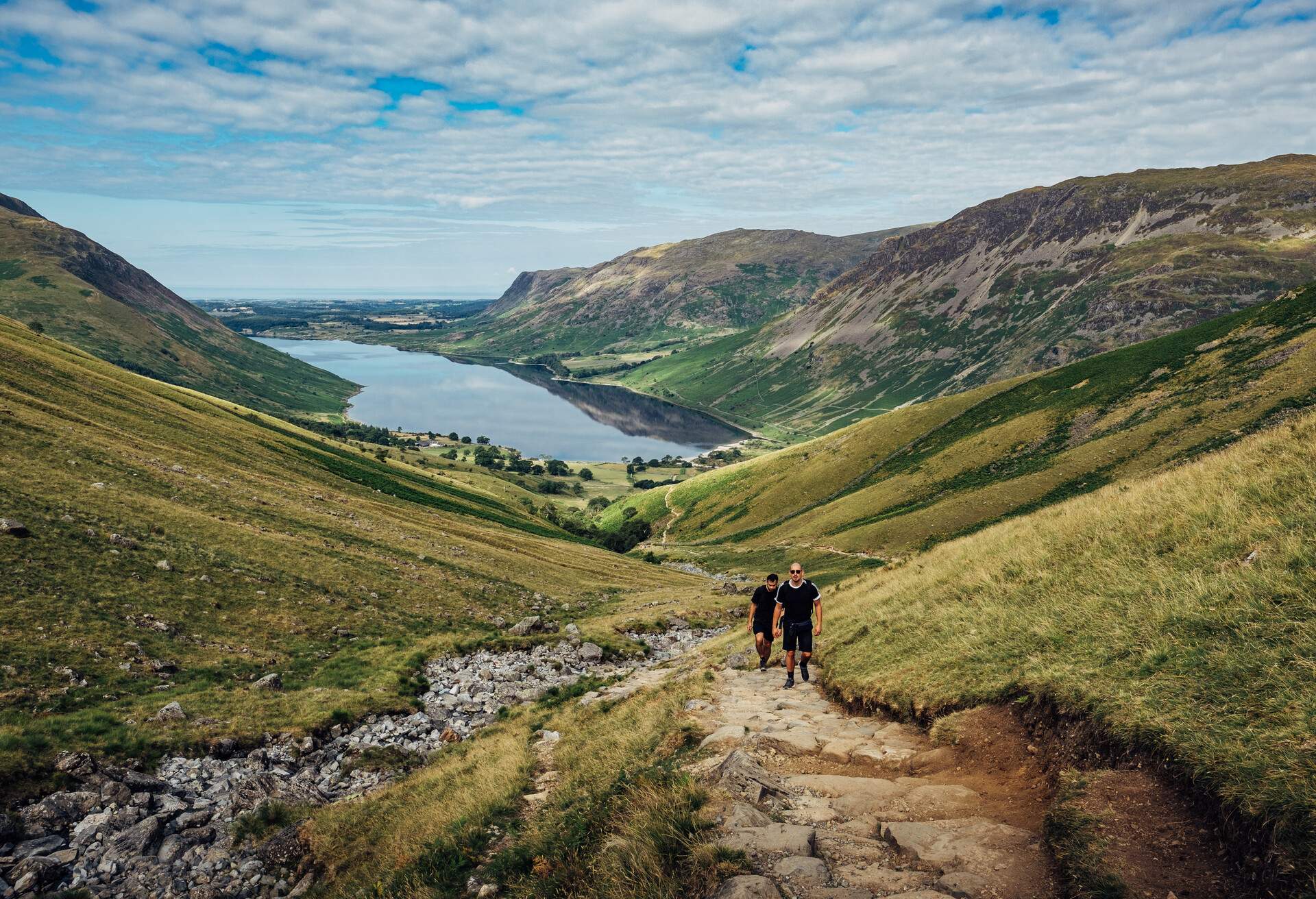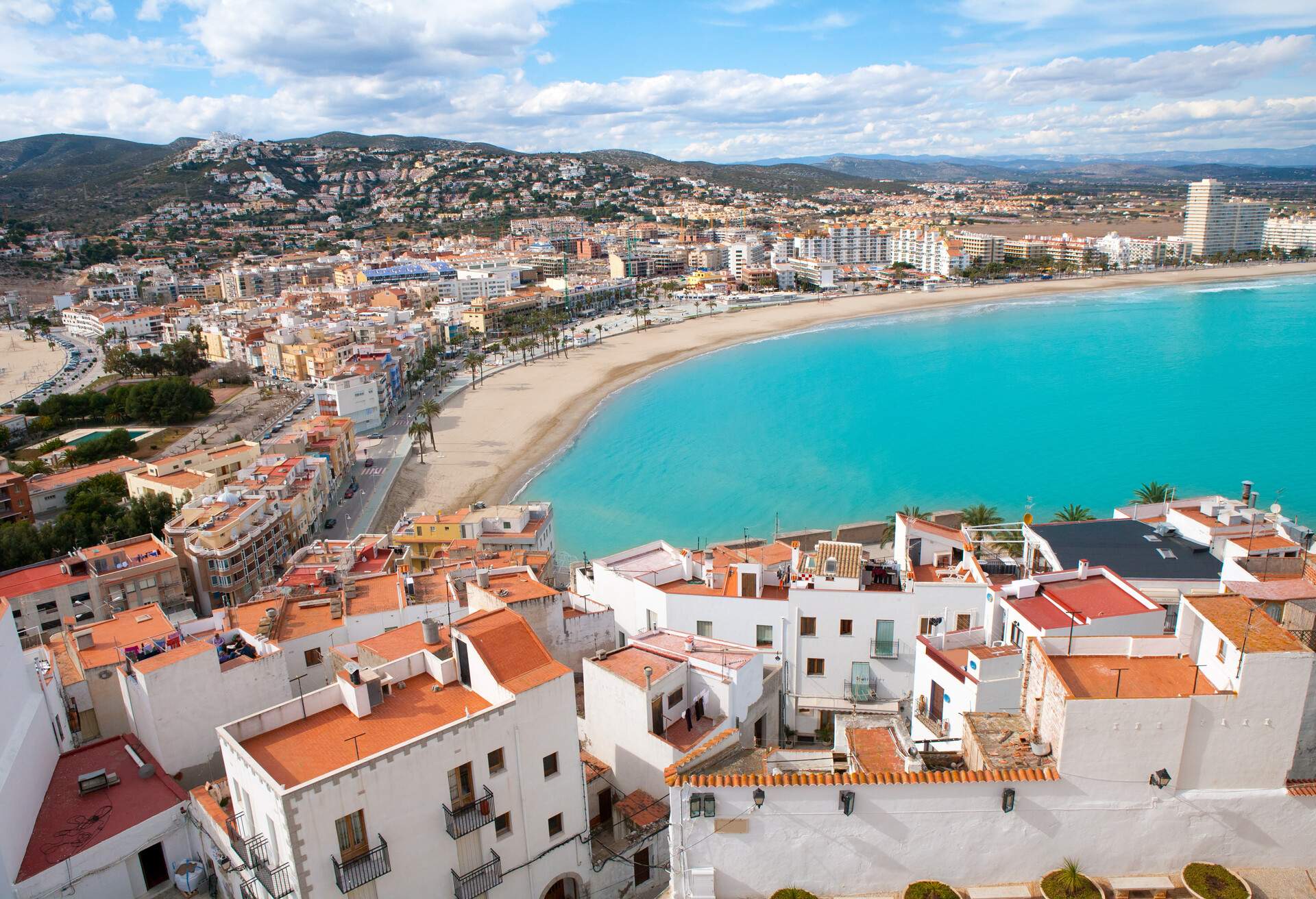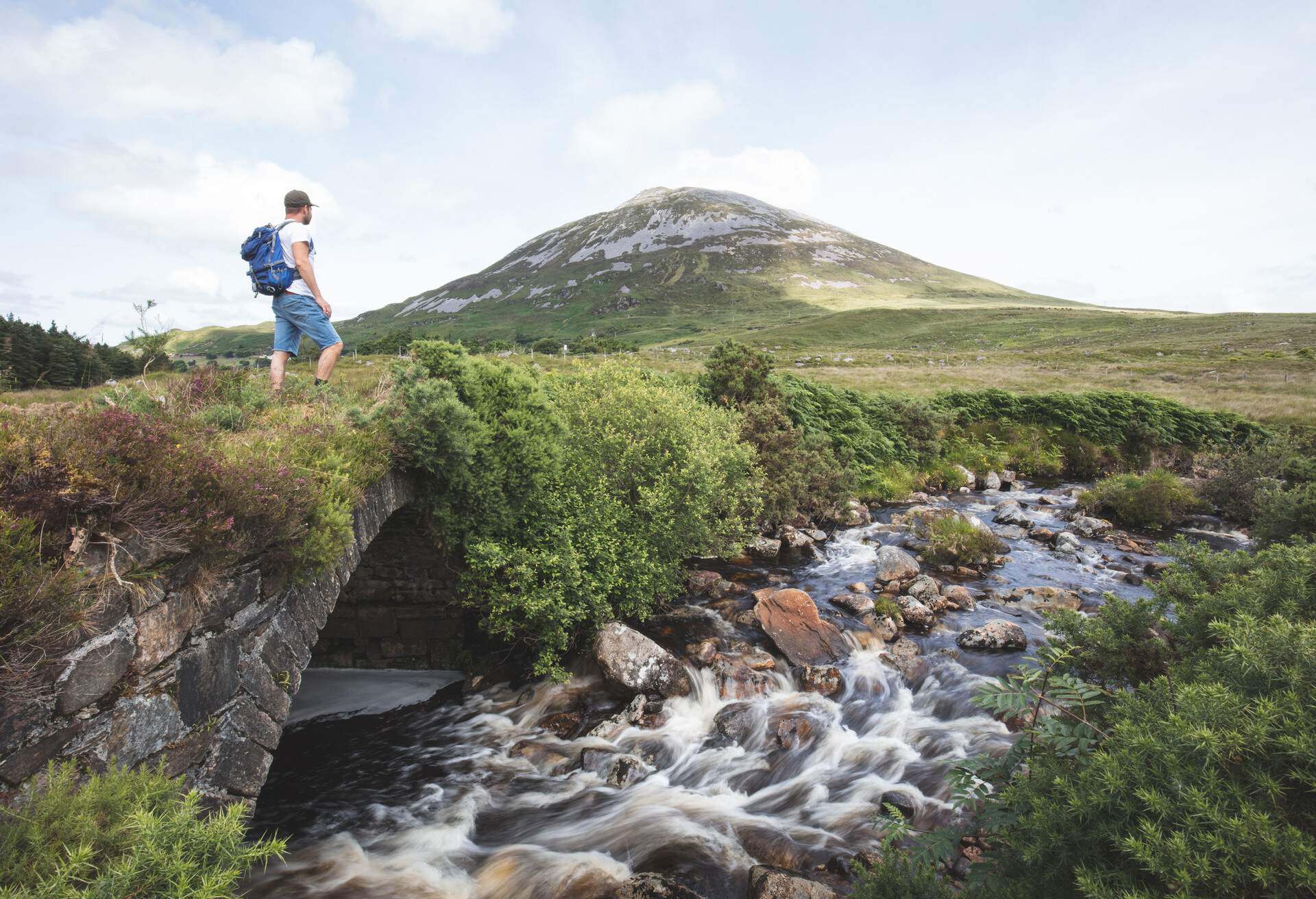The UK is full of picturesque coastal towns that you can visit throughout the year. Whether you get a bright sunny day or an overcast sky these coastal walks are the perfect way to get out into nature.
White chalk cliffs in England, isolated peninsulas in Scotland, seabird colonies in Wales and rocks built by giants in Northern Ireland are just some of the incredible things to see on coastal walks in the UK.
Coastal walks in the UK: England
Stroll along the White Cliffs of Dover or make a multi-day trek along the coast of Cornwall, with these coastal walks in England. You’ll find stunning views of rock formations and crashing seas while walking over historic landscapes home to incredible wildlife.
Minehead to Porlock Weir, Somerset
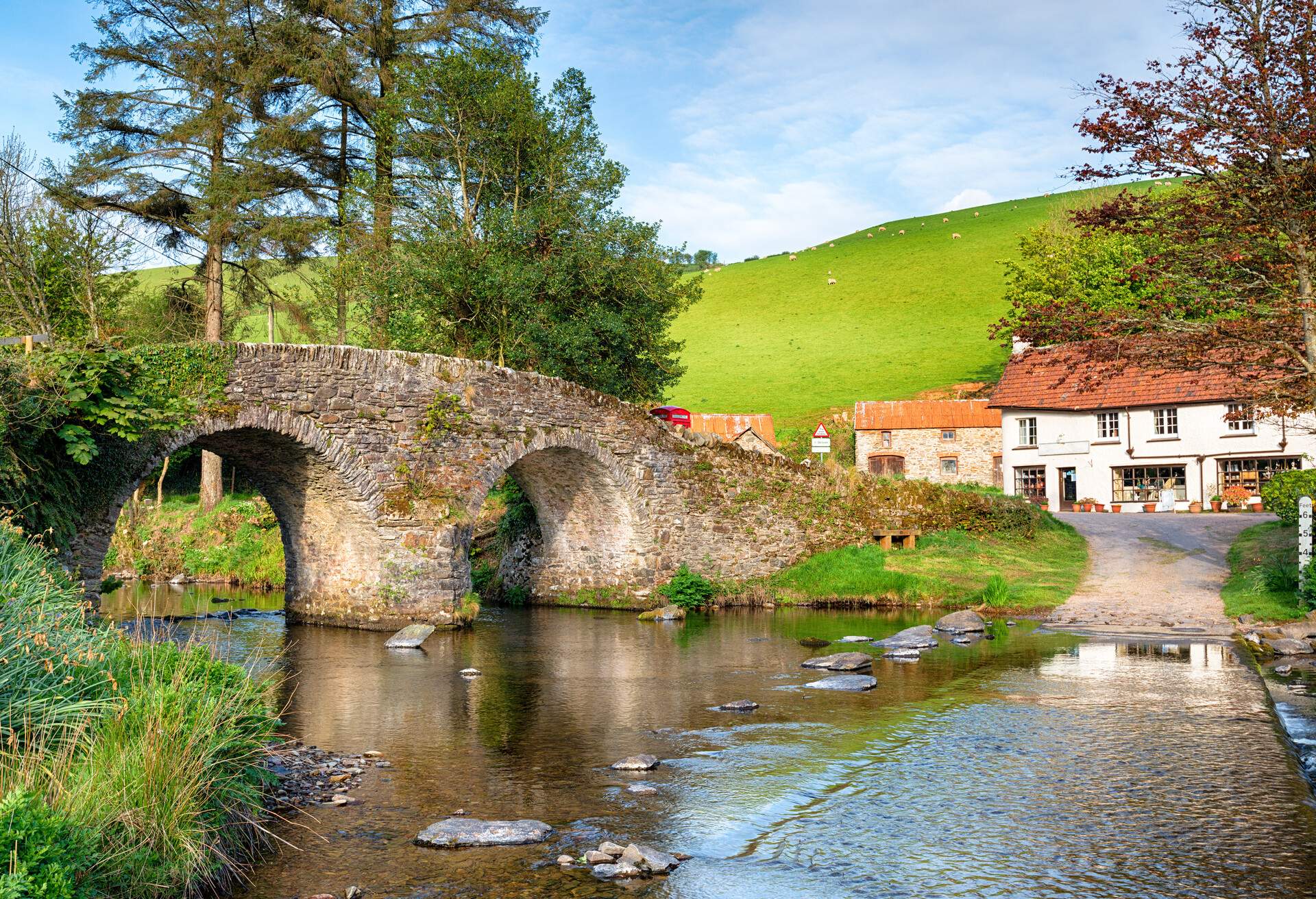
This trail takes you along the Exmoor coast, the highest coastline in England, home to red deer, wild ponies and whitebeam trees. Visit in spring and summer to get the best chance of experiencing the region’s wildlife. You can opt for the most challenging path, close to the coastline, which takes you up and down steep inclines, or head a little further inland for a more moderate difficulty. Once you’ve completed the roughly 3-hour, 14.3-km walk, there are some excellent pubs in Porlock where you can refuel before heading back.
Seahouses to Craster, Northumberland
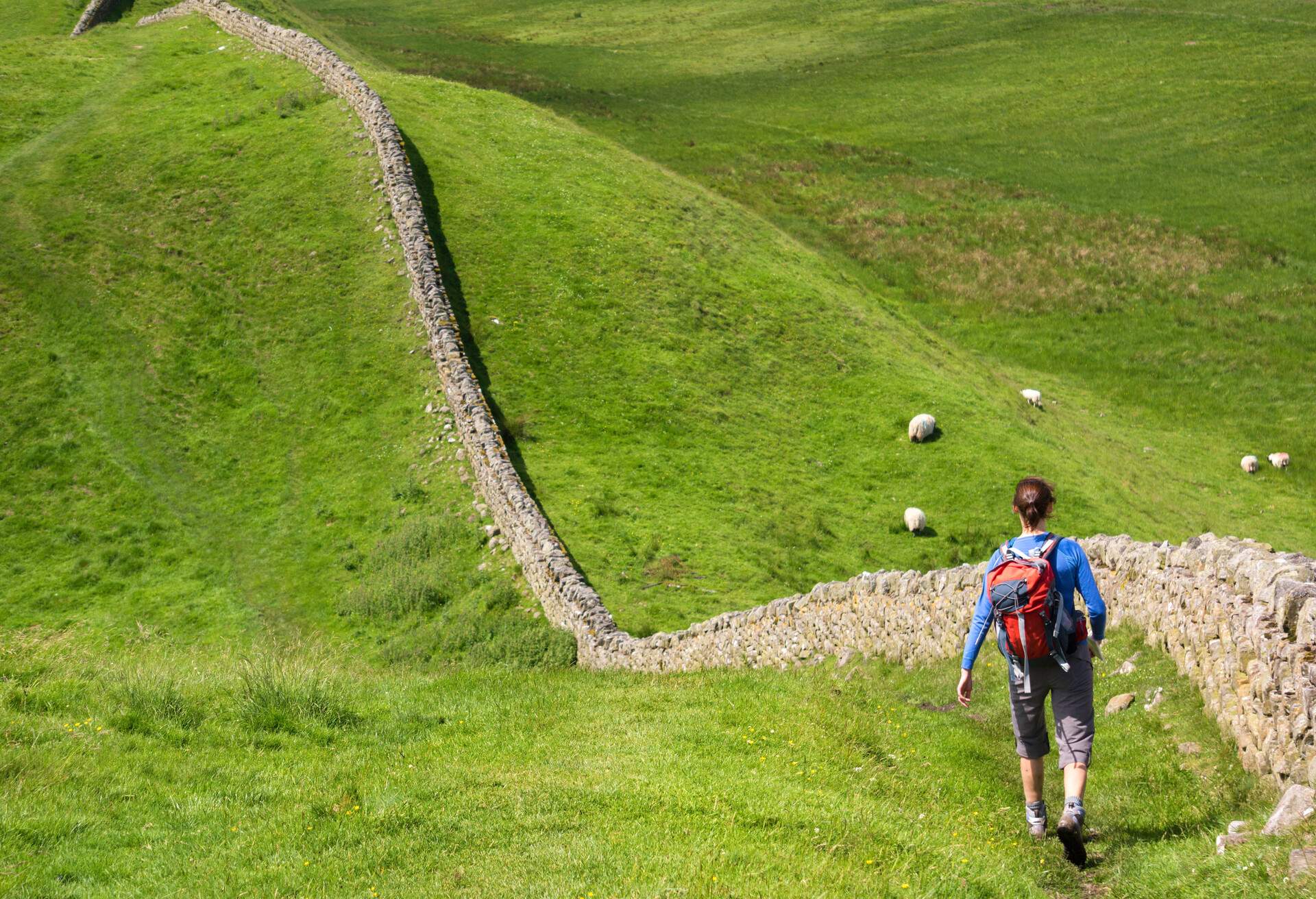
This trip from Seahouses to Craster, along the Northumberland Coast, is a moderately difficult walk, stretching around 17.5 kilometres. The trailhead starts at Seahouses Post Office and takes you past Dunstanburgh Castle and to the small fishing village of Craster. You’ll get stunning views of the North Sea along the way, and the journey will take you around 4-5 hours. You can enjoy this walk all year round; it doesn’t always have clear signage, so a map or GPS will likely come in handy to keep you on course.
Old Harry Rocks, Dorset
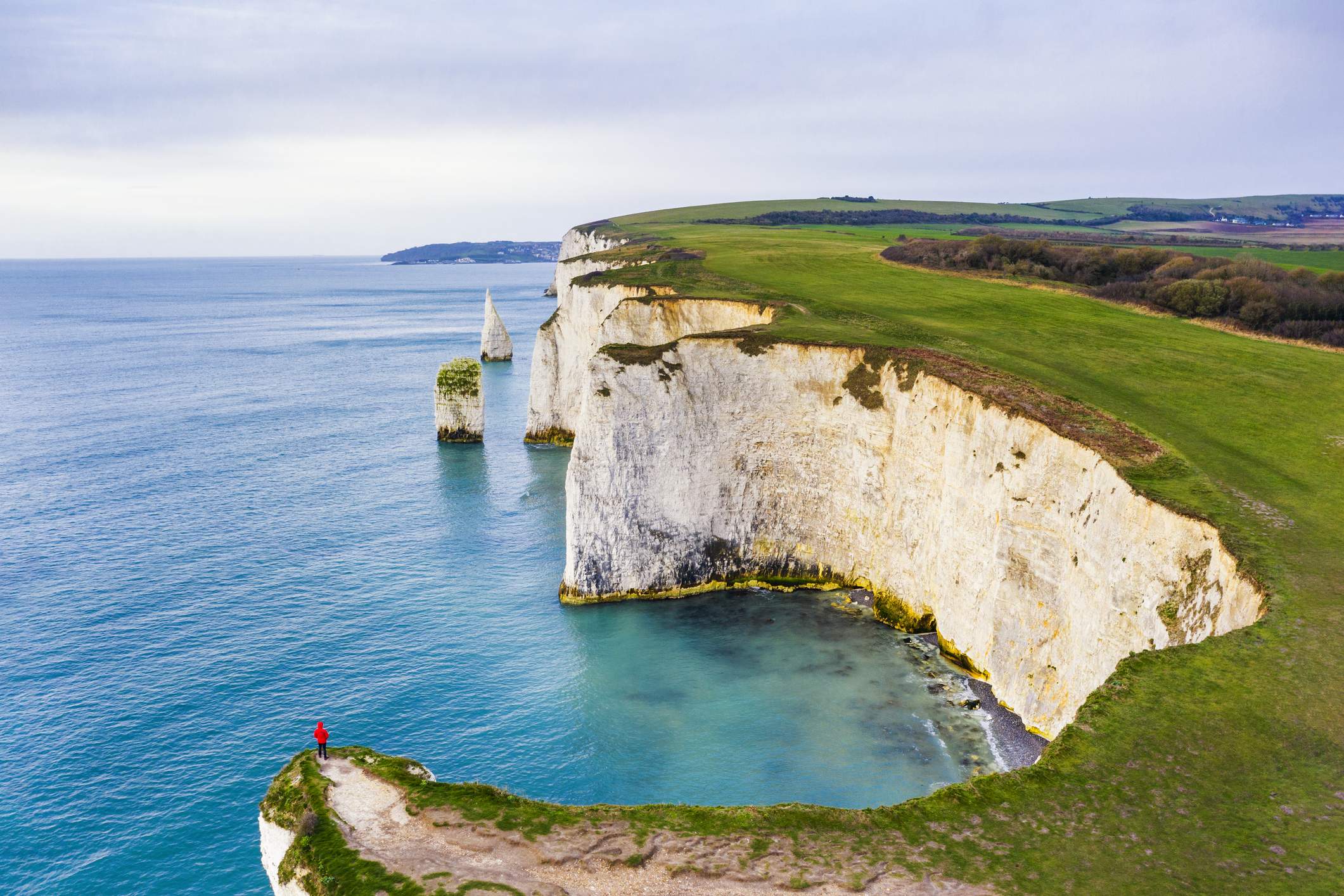
This is a gentle walk that brings you to the iconic Old Harry Rocks, three chalk formations off Handfast Point, at the easternmost part of the Jurassic Coast. The circular walking trail from Studland Bay to the Rocks and then back to the bay via Studland Hill is roughly 9 kilometres and takes around 3 hours to complete. This is a lovely walk to do in spring or summer, as you’ll find a few spots near the rocks where you can sit down for a picnic and take in the view. Studland Bay has a number of excellent hotels where you can stay, including Knoll House Hotel and Longmead Cottage Bed & Breakfast.
White Cliffs of Dover, Dover
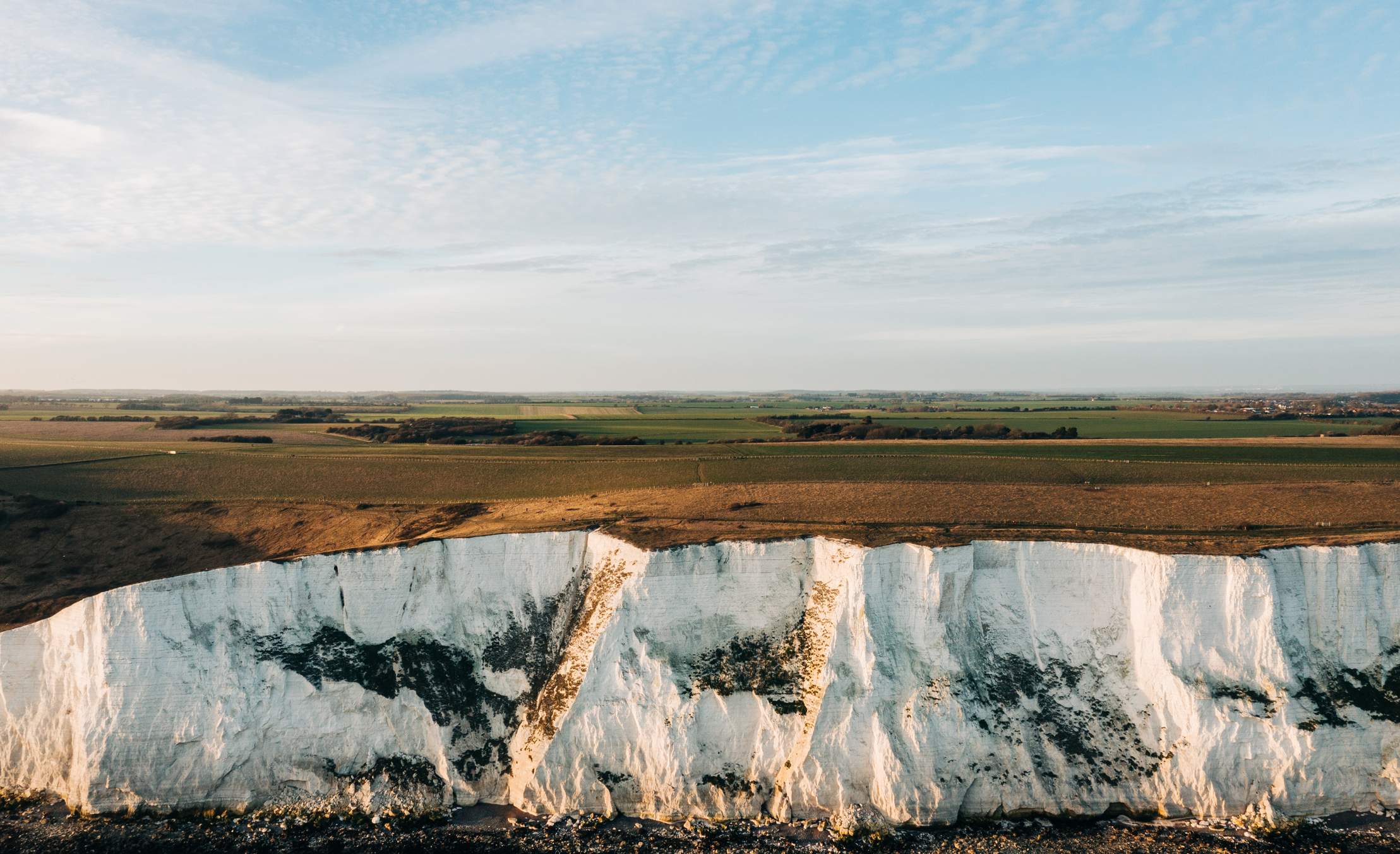
The White Cliffs of Dover are one of England’s most iconic landmarks, with centuries of history. There are a few different walking paths, including Viewpoint Walk, which is just a roughly 20-min walk from the Visitors Centre and is wheelchair friendly.
For a longer hike, you can head from the Visitor Centre to South Foreland Lighthouse; this takes around 50 minutes one way and runs along the edge of the cliffs, providing excellent views. The recommended time to visit the cliffs is usually in summer, when you’ll experience the warmest temperatures, but the winter months are much quieter with a lovely atmosphere.
Whitehaven to St Bees, Cumbria
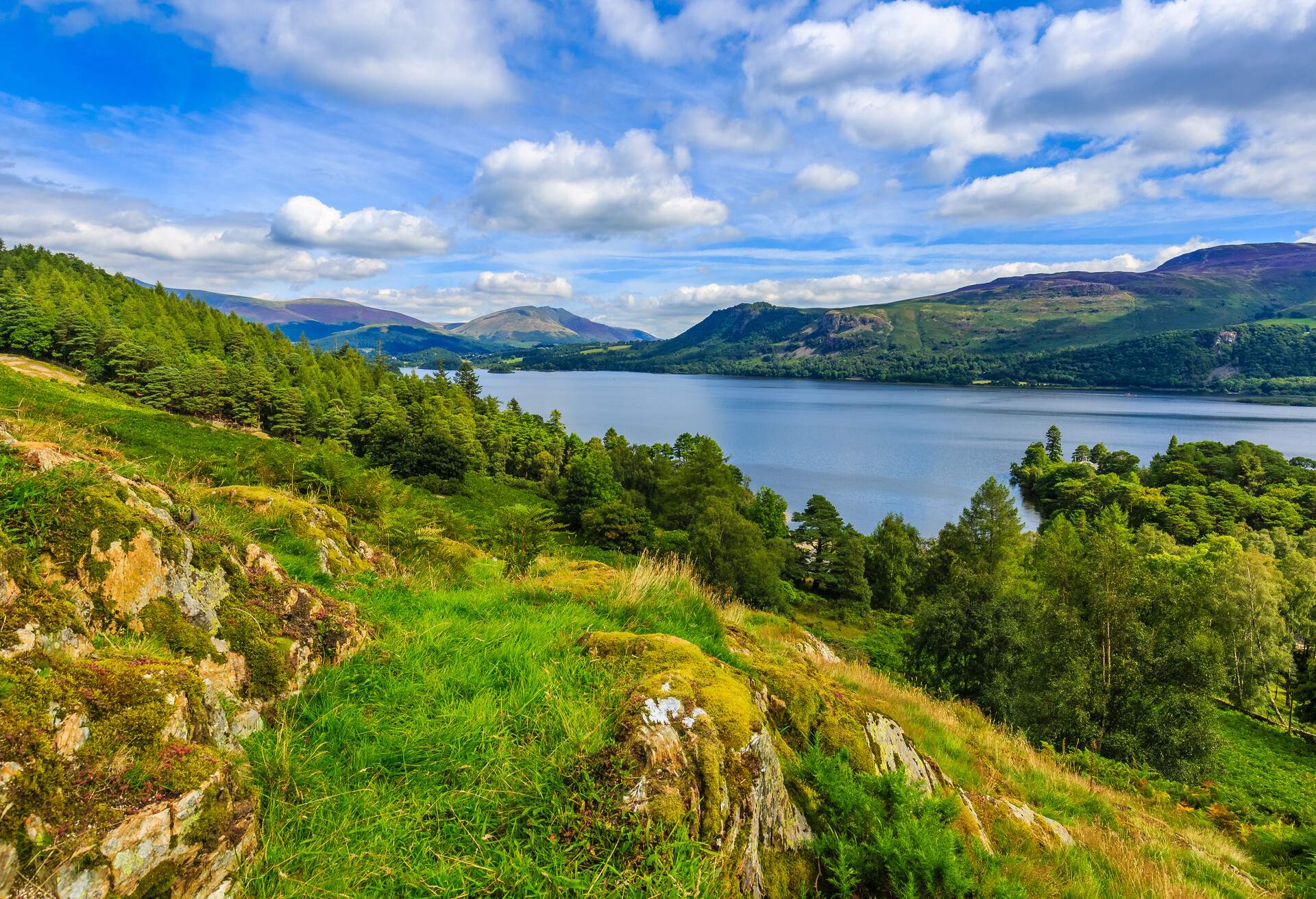
The Whitehaven to St Bees coastal walk will take you along the highest cliffs in Cumbria to the St Bees Lighthouse and past one of the largest seabird colonies on the west coast of England (April and May are often the best time to see them). It stretches roughly 12 kilometres and is moderately difficult with a few steep sections. When you arrive, you’ll have plenty of options for accommodation at St Bees, including camping and caravan sites close to the village. Alternatively, you can easily head back to Whitehaven by train and stay at one of Whitehaven’s hotels or bed and breakfasts.
St. Michael’s Mount, Cornwall
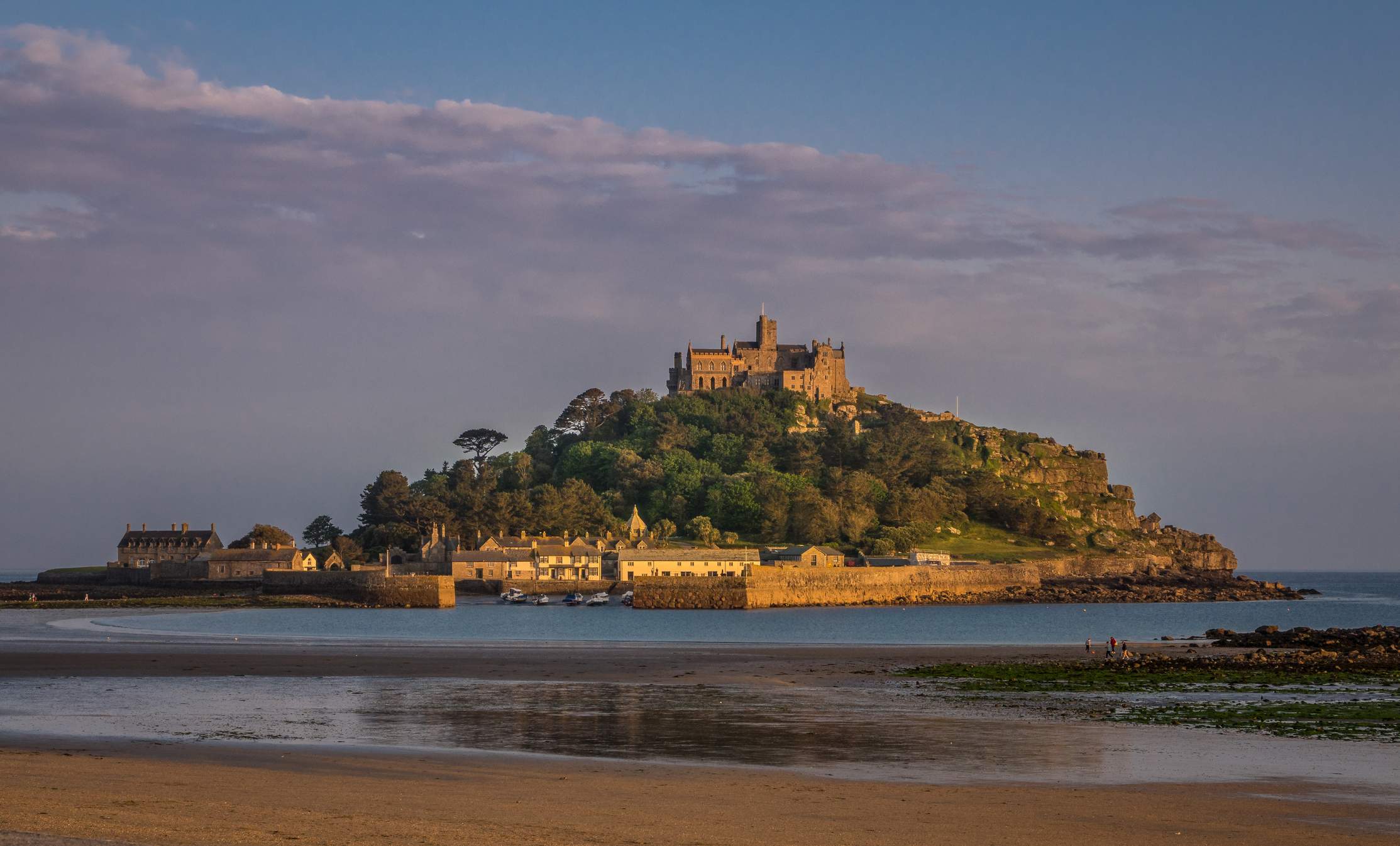
The tidal island of St Michael’s Mount is the final destination of this moderately difficult 15-kilometre walk that takes you along the South West Coast Path. Begin at Lamorna Cove and take the path to Mousehole, known as one of England’s prettiest villages. You’ll also pass through the towns of Newlyn and Penzance before walking down the causeway to St. Michael’s Mount, arriving at the historic castle that dominates the island’s landscape. The high season for St. Michael’s Mount is April to September, and during this time, you’ll need to purchase a ticket to get access to the island.
The Lizard Pensinsula, Cornwall
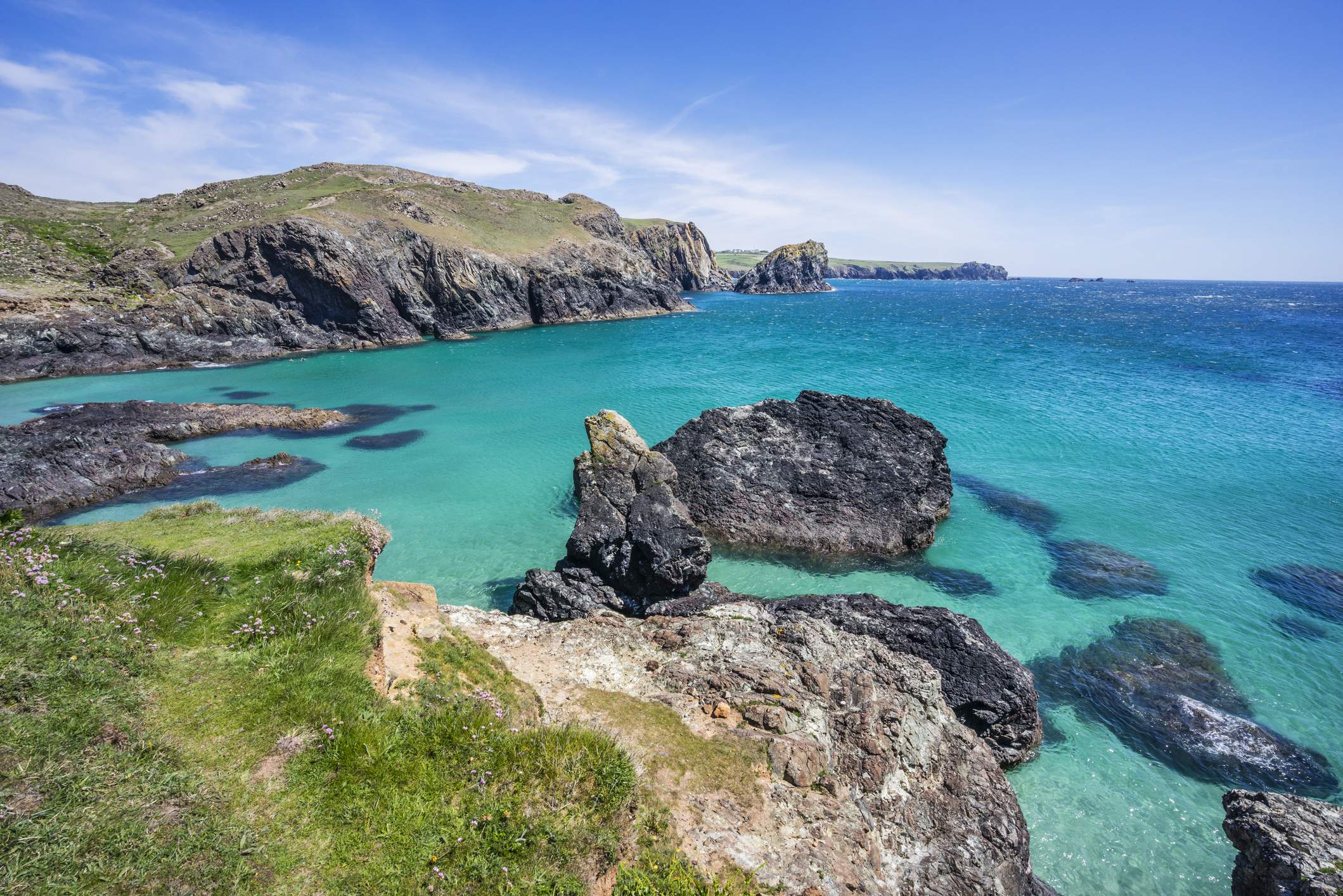
The Lizard Peninsula Loop Walk is a moderately difficult walk that stretches just over 11 kilometres, along the southernmost part of Britain. Beginning at Kynance Cove, you can walk along the coastal path that runs above Pentreath Beach to The Lizard Lighthouse, before passing a large hole in the cliffs known as Lion’s Den and heading through Lizard Village back to where you began.
Keep an eye open for seabirds along the way, including guillemots and shearwaters, especially if you’re visiting in spring and summer. You can find a range of accommodation options in the area, including self-catering caravan parks and Mullion Cove Coastal Retreat, a five-star holiday park.
Porthcurno to St Ives, Cornwall
This popular walking path in Cornwall is a great option year-round, taking you across clifftops, beaches, and abandoned tin mines. It’s a multi-day hike and quite a difficult walk with several sections of steep inclines and muddy stretches, but the stunning views and historical sights are worth it. A great way to break it up is by walking from Porthcurno to St Just, St Just to Zennor, and Zennor to St Ives. The whole trail is just under 50 kilometres long, and each section takes roughly 3-5 hours to complete.
Horsey Windpump to Waxham, Norfolk
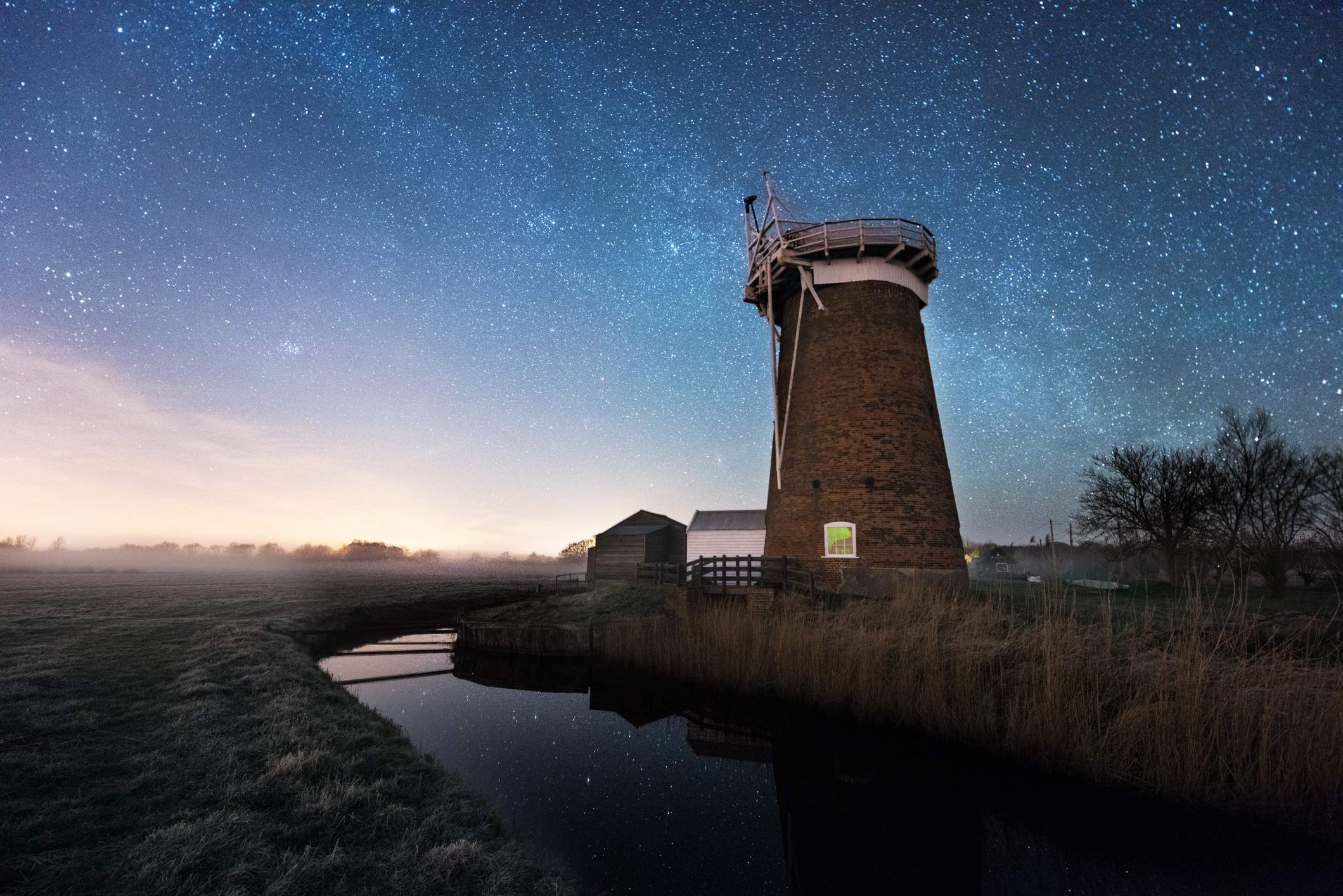
Horsey Windpump to Waxham takes you from a haven for seals to one of the best wild swimming beaches in Norfolk. The recommended time to make this trip is between January and March, as this is when you’ll be able to see the seals that make a home on the shore of Horsey Beach. You can also spot them between November and January, but as this is their mating season, you won’t be able to walk down onto the beach. It’s a very gentle, roughly 11-kilometre walk, mostly either along sandy dunes or grassy farm tracks. There are excellent pubs at both Waxham and Horsey where you can refuel.
Coastal walks in the UK: Wales
Remarkable coastal wildlife can be found in Wales, both at popular nature reserves like Ramsey Island and at quieter getaways like Ceredigion. Whichever region you travel to, you’ll find atmospheric coastal walks that can give you a taste of the history of Wales. Choose Aberdaron in Snowdonia for a more challenging hike or Church Bay in Holyhead for a gentle walk with views of the bay.
Ramsey Island, Pembrokeshire
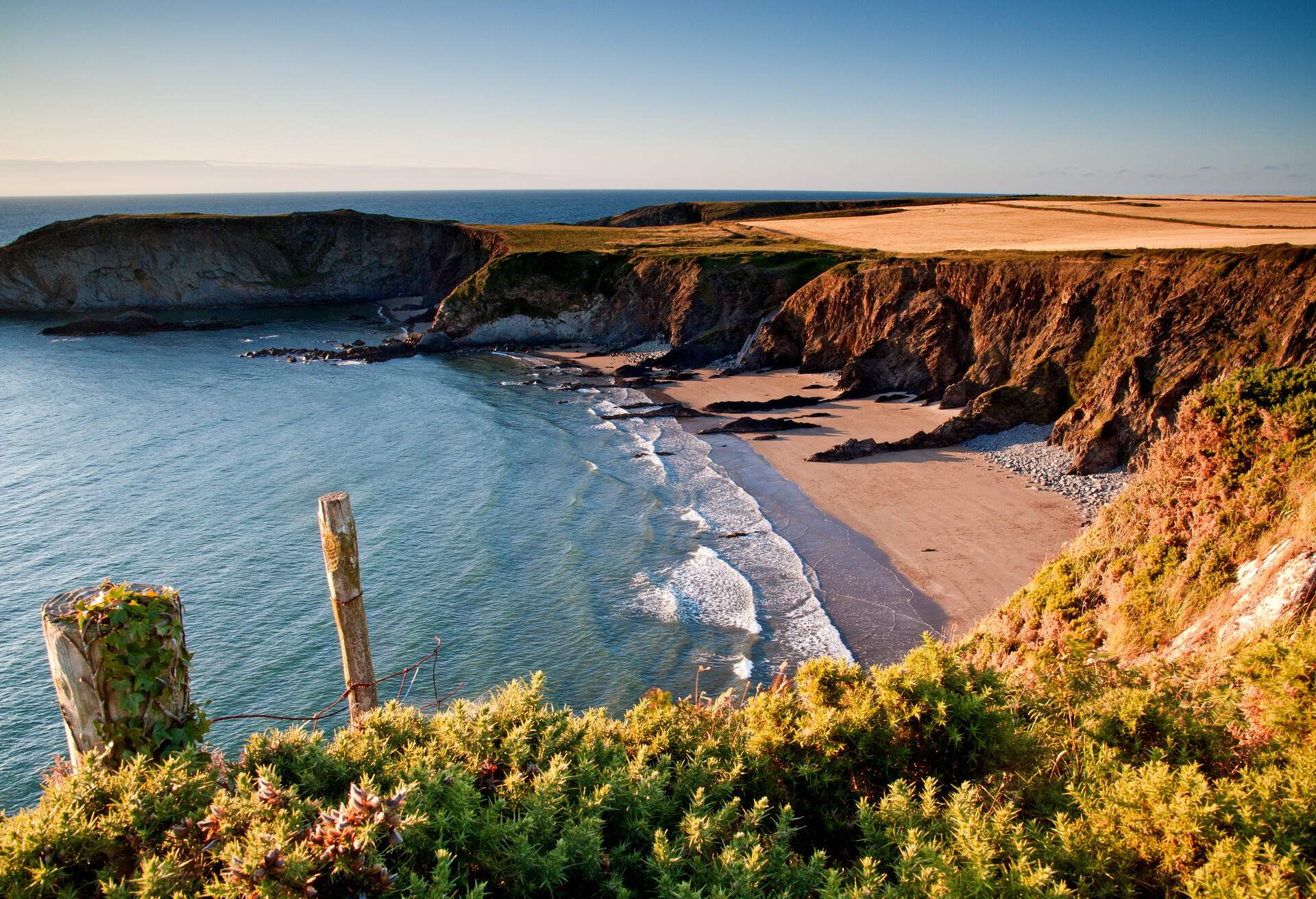
If you’re a wildlife lover visiting Pembrokeshire, then a day trip to Ramsey Island is an absolute must. The island is a nature reserve, and if you visit in June, you’ll find seabird breeding colonies all over the coastline. There’s an easy, well-marked loop walk that begins in Aberfelin Bay and takes you to some of the island’s peaks, giving you excellent views out to the nearby islands and, on a clear day, all the way across the Irish Sea, to the coastline of Ireland. Boats to Ramsey Island depart from the small town of St Davids, where you can stay at the Galwad y Mor or The City Inn.
St Davids Peninsula, Pembrokeshire
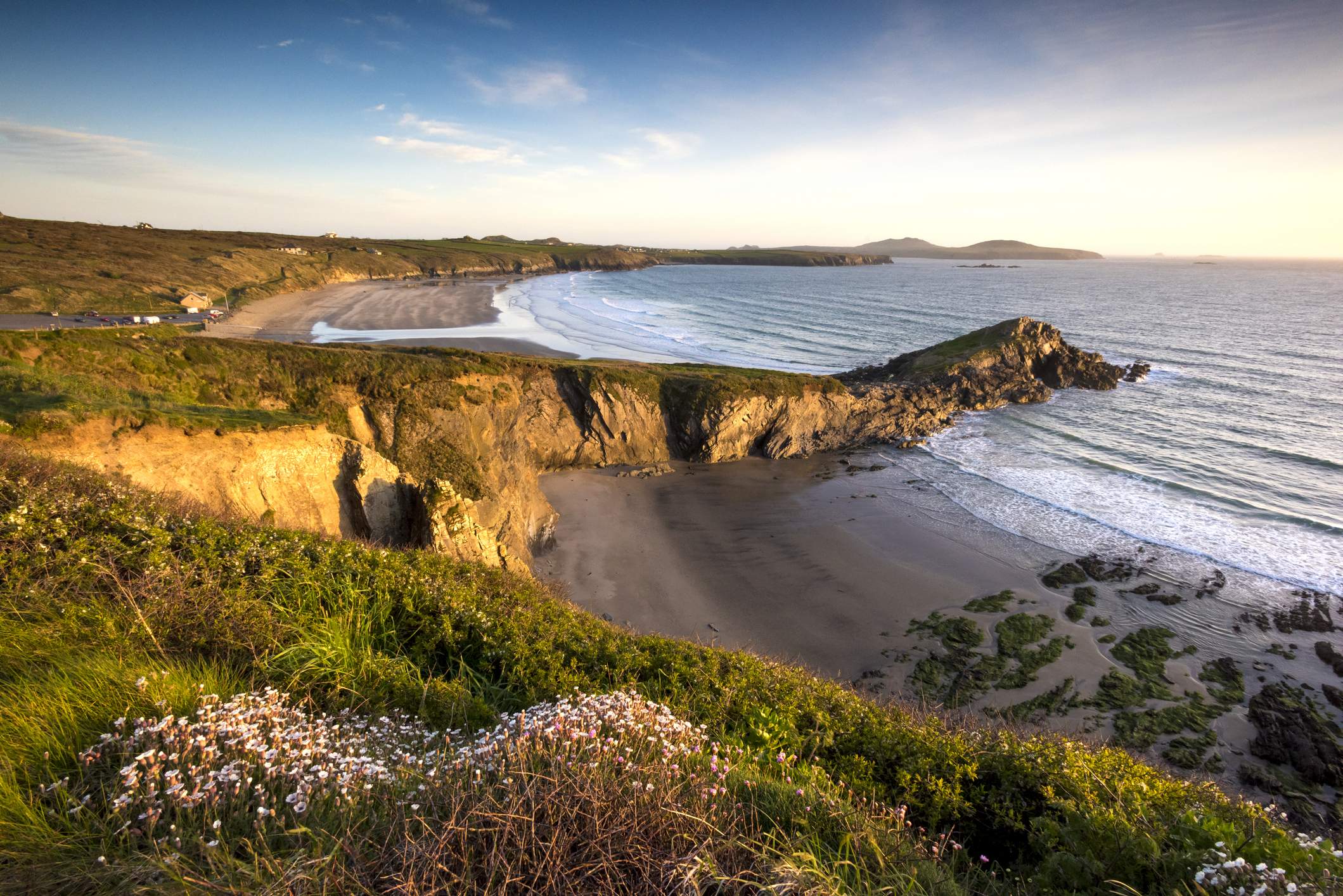
The St Davids Peninsula coastal loop walk will take you through both the stunning landscapes and remarkable history of the region. On this moderately difficult, roughly 17-kilometre walk, you’ll have the chance to see the beautiful Porthclais Harbour and walk across 600-million-year-old rocks at Treginnis Peninsula. Whitesands Bay is the perfect place to stop for a bite to eat at the local cafe, and if you’re visiting in summer, you can go for a swim in the cool waters. St Davids is the UK’s smallest city, but there are still some excellent hotels in the area, including St Davids Cross Hotel and Cathedral Villas.
Aberdaron, Snowdonia
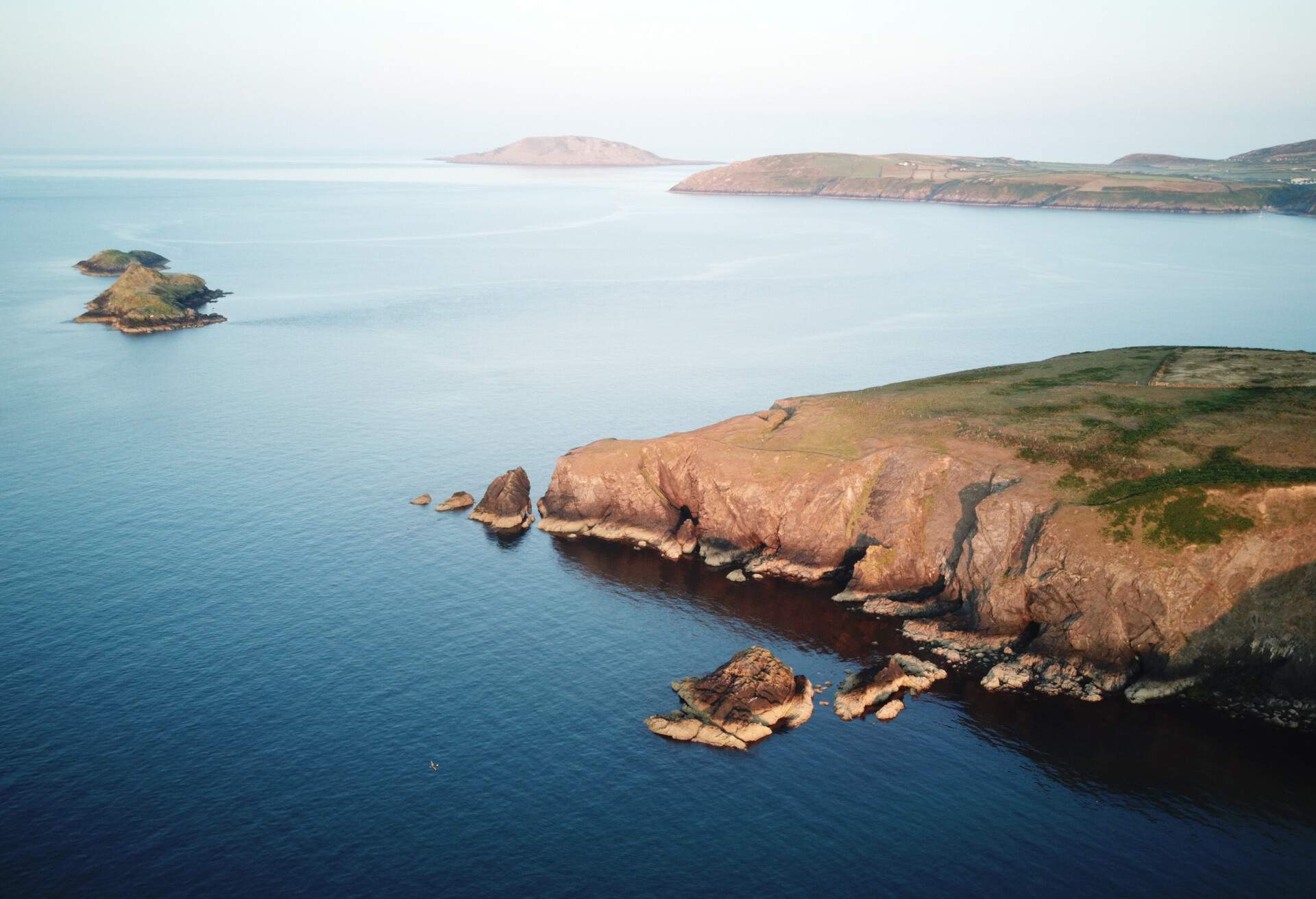
The Aberdaron Coastal Loop is an excellent year-round walk that crosses nearly 15 kilometres of coastline and inland paths. You’ll get incredible views of both sides of Llyn Peninsula and the chance to visit Porthor Cove, also known as The Whistling Sands due to the way the sand whistles under your feet when it’s dry. It will take around 5 hours to complete and is fairly difficult, with some sections requiring uphill climbs. Aberdaron has some lovely accommodation options, including The Ship Hotel and Gwesty Ty Newydd, which overlooks the beach.
Church Bay, Holyhead
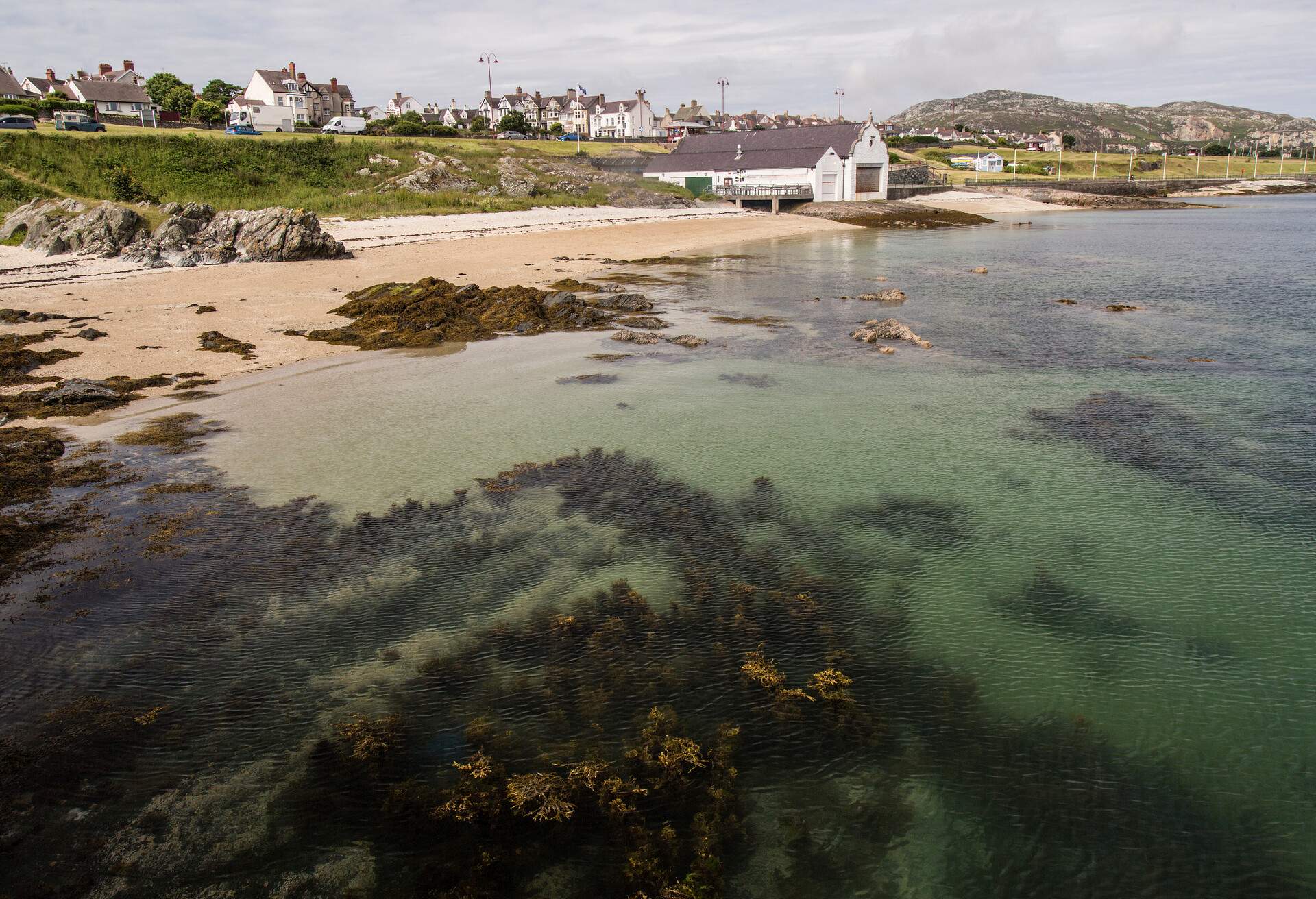
If you’re visiting Holyhead at any time of year, you can make the easy, roughly 5-kilometre circular walk from Porth Trwyn to Church Bay and back. It takes you along the Anglesey Coastal Path, providing gorgeous views of Holyhead Bay to Church Bay. You can then either head back along the coastal path or take an inland route. Stop at Church Bay Inn for some food and drink along with excellent views of the bay. You’ll find plenty of accommodation options throughout Holyhead, including a few guest cottages close to Porth Twyn, such as Ty Gwennol Holiday Cottage.
Llangrannog to New Quay, Ceredigion
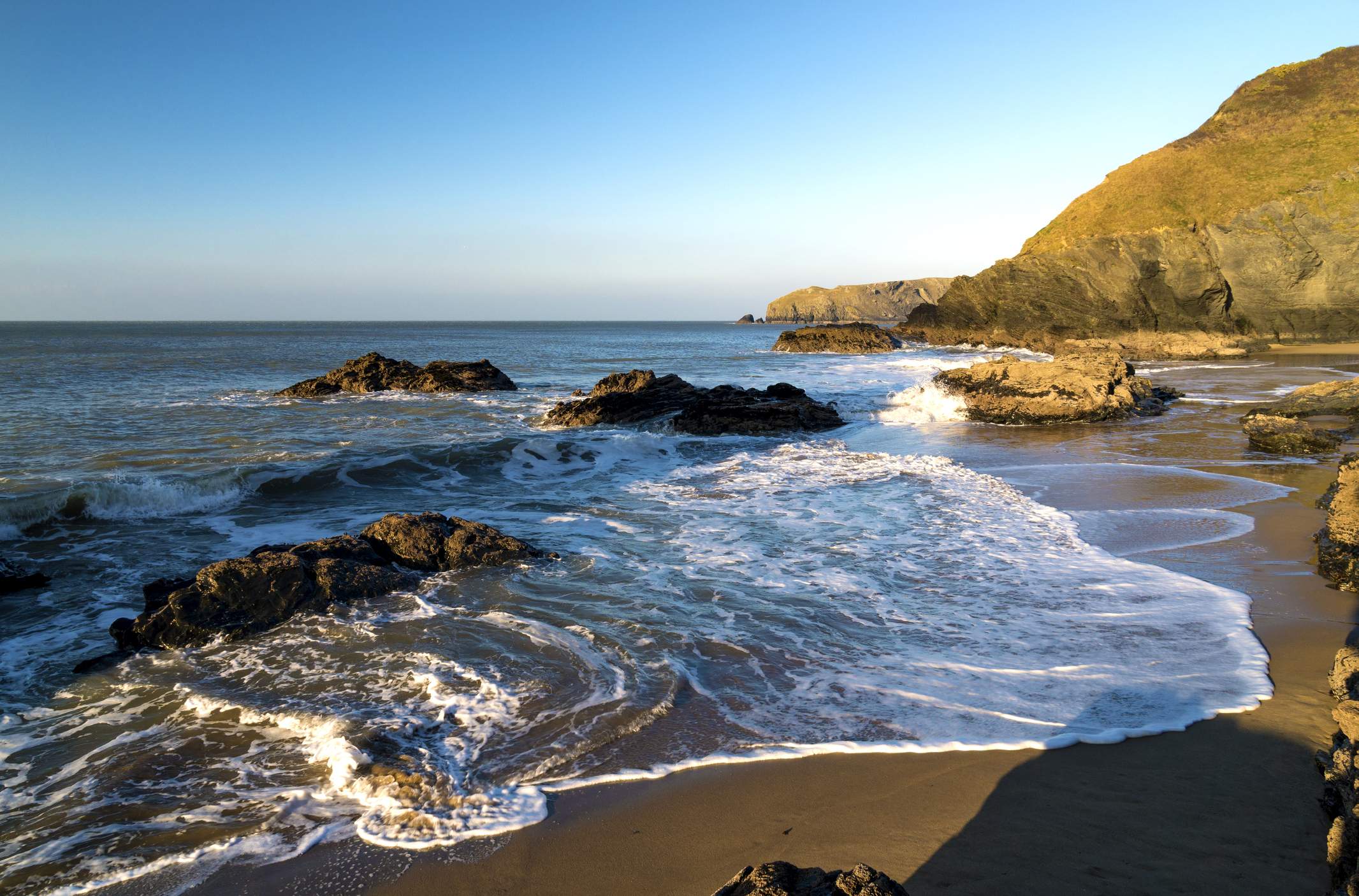
Ceredigion is a great region to visit during the high tourist season, as it’s often overlooked by other travellers. Llangrannog to New Quay takes you along the Ceredigion Coast Path, along extremely high cliffs, through woodland valleys, and past an Iron Age fort. There are some good wildlife spotting opportunities along the way, including Cwmtydu, a cove where Atlantic grey seals sometimes gather in autumn, and Bird Rock, a breeding area frequented by razorbills and kittiwakes.
If you want to head back to Llangrannog, be aware that the bus only runs from Thursday to Saturday, but both areas have some excellent accommodation options, including Pentre Arms at Llangrannog and Black Lion Hotel at New Quay.
Best coastal walks in the UK: Scotland
Discover isolated peninsulas and dramatic rock formations with these coastal walks in Scotland. Choose the Eshaness loop walk for the best chance to spot wildlife and the Quiraing to Flodigarry trail to see the most unique landscapes.
Eshaness and Tangwick, Shetland
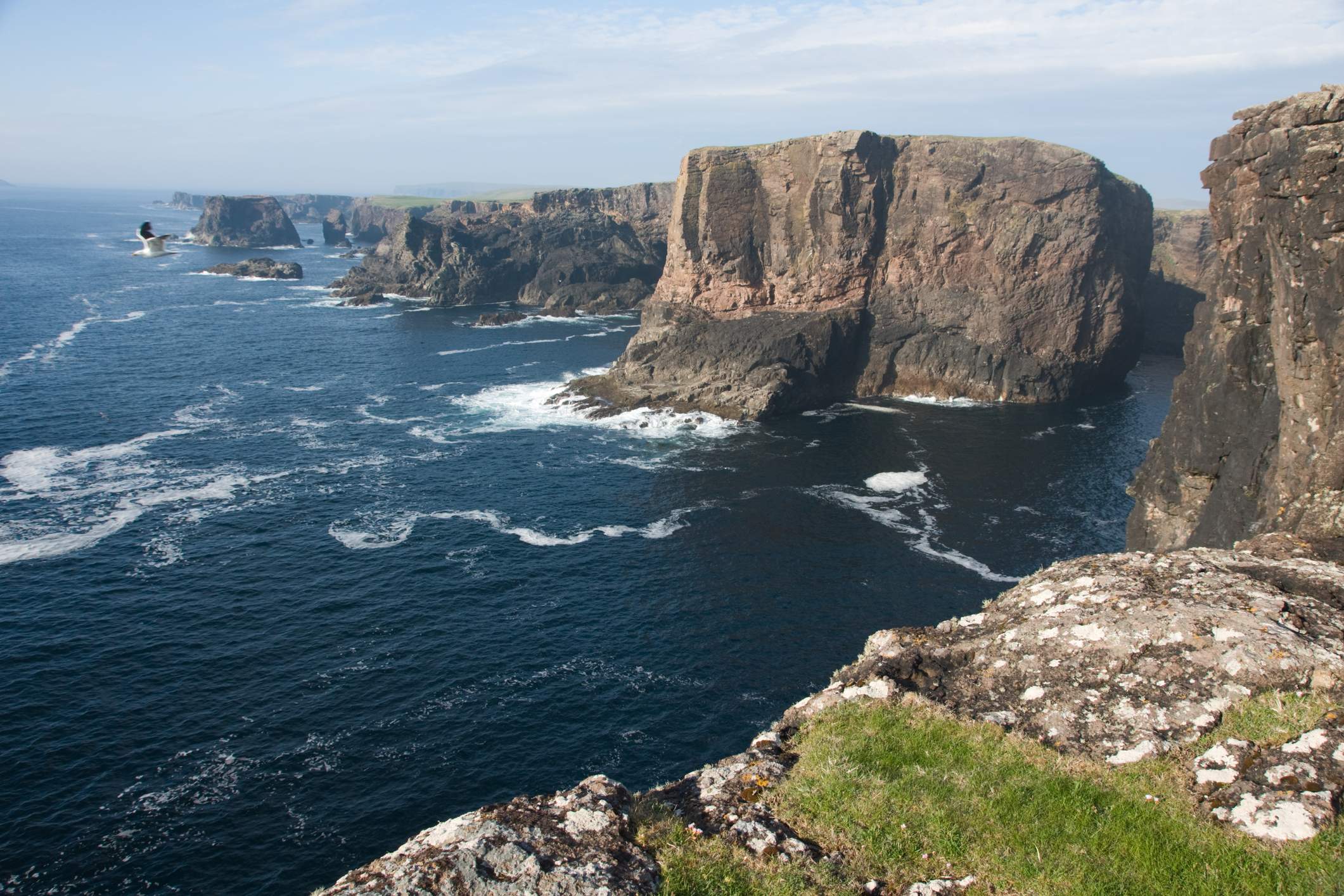
This walk begins at the Eshaness Lighthouse and will take you along seaside cliffs to a 17th-century manor house and back in around 5 hours. Along the way, look out for the Calder’s Geo inlet, where you’ll have the chance to spot puffins (especially in June and July), and the Fiorda Taing blowhole, where you might be able to see otters. Roughly 14 kilometres long, this is a moderately difficult walk with some rockier terrain and slopes after Calder’s Geo. You can actually find a place to stay right next to the walk, as the Eshaness Lighthouse offers cosy, self-catered accommodation.
Quiraing, Isle of Skye

Quiraing to Flodigarry is a stunning 6-kilometre walk that provides remarkable views of the coastline and the rock formations that run along it. It’s moderately difficult, with some rough terrain and hilly sections, so be sure to bring a sturdy pair of walking shoes. You can make this walk year round, but be sure to bundle up if you’re visiting in winter and bring plenty of water if you’re visiting in summer. It’s a loop walk, so you could easily choose to travel from Quiraing to Flodigarry or Flodigarry to Quiraing. Both have excellent accommodation nearby, including Tigh Quiraing Bed and Breakfast and Flodigarry Hotel.
Ardnish Peninsula
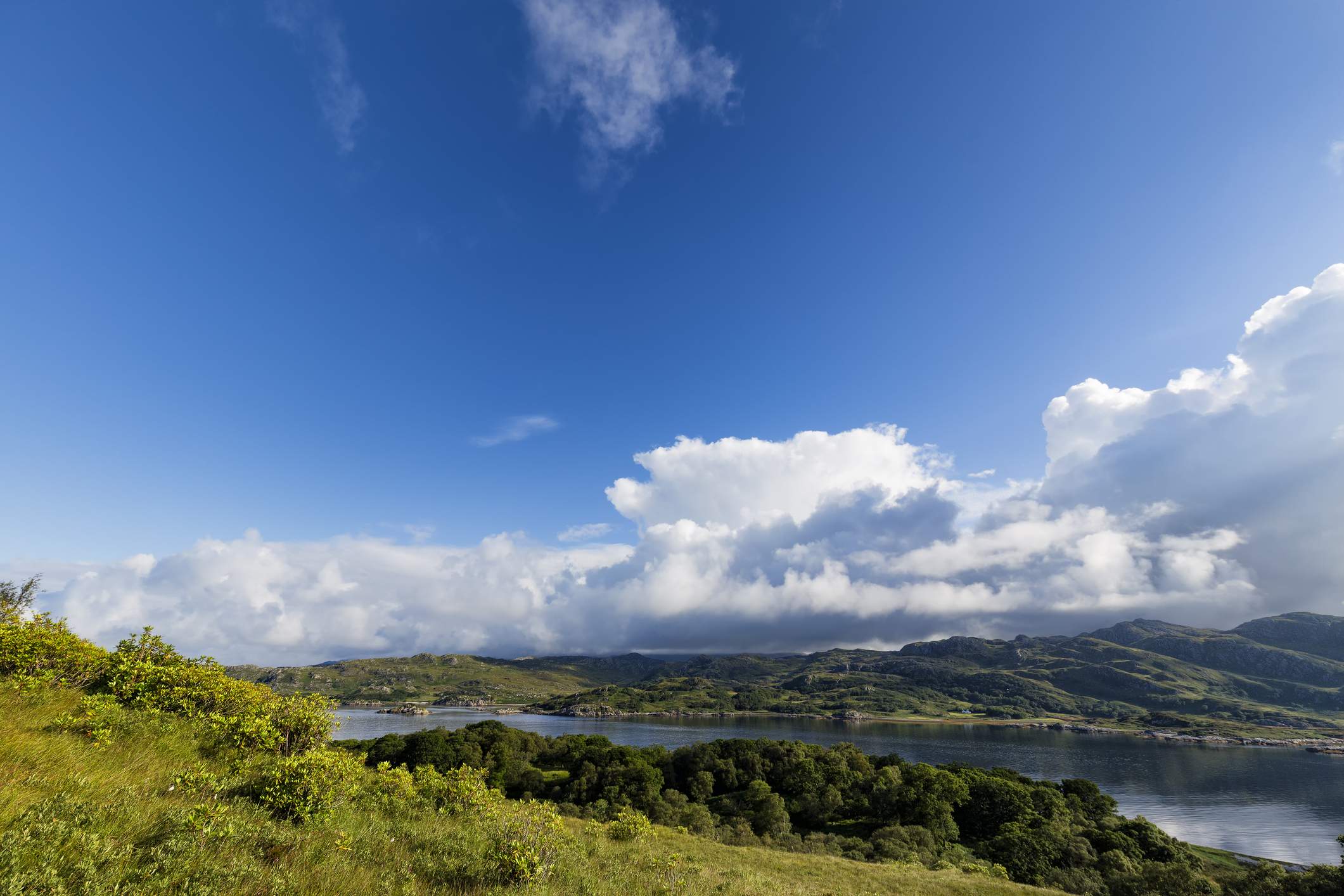
This isolated and atmospheric coastal walk takes you along the Ardnish Peninsula, an uninhabited region stretching into Loch Ailort, which you can visit throughout the year. The circular walk is around 12 kilometres long and takes roughly 5 hours to complete. You can choose between a gentle, well-trodden, clearly marked path or taking a slightly more difficult route down to the abandoned fishing village of Peanmeanach. There’s no accommodation on the peninsula itself, but you can stay at Lochailort Inn, about a 30-minute walk from the peninsula, or at Old Library Lodge in Arisaig, which is roughly a 20-minute drive away.
Coastal walks in the UK: Northern Ireland
Swinging rope bridges and stunning rock formations are the unique features of Northern Ireland’s coastal walks. The coastline of County Antrim is home to some spectacular trails and geological features. One of its most well-known is Giant’s Causeway, an area of roughly 40,000 interlocking columns, caused by the eruption of a volcanic fissure (although, the legend says that they were built by a giant).
Ballintoy to Giant’s Causeway, County Antrim

Ballintoy to Giant’s Causeway takes you along some of the best parts of the Causeway Coast Way, a stunning coastline separating Northern Ireland from the Atlantic Ocean. One excellent stop along the way is the historic ruins of Dunseverick Castle, built sometime before the 5th century and destroyed in the 1650s. The path stretches roughly 16 kilometres, and you’ll mostly stick to easy walking terrain before finally arriving at the famous Giant’s Causeway rock formations. The recommended time to visit is usually in summer, as the causeway is open to the elements and is usually quite cold the rest of the year.
Carrick-a-Rede, County Antrim
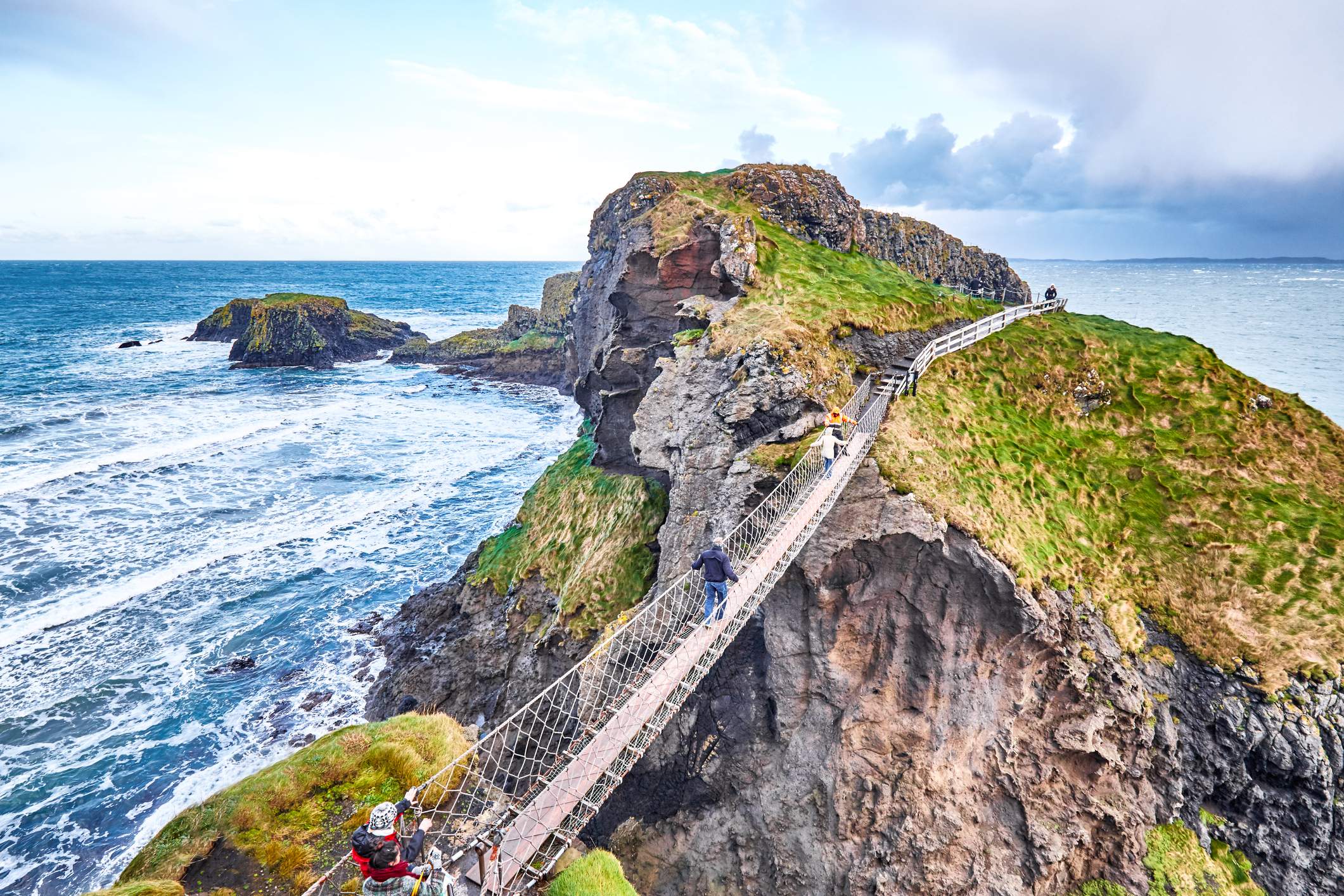
Fancy crossing a 20-metre-wide chasm on a swinging rope bridge over the Atlantic? Then give this easy (as long as you aren’t afraid of heights), 2.2-kilometre walk a try. You’ll need a ticket to cross the bridge (which you can book online), so start this walk at the ticket booth and then head down the coastal path to the bridge and across to Carrick-a-rede Island. You’ll get stunning views over the water and out to nearby islands, such as Rothim Island and Sheep Island. The bridge is open year-round but can be closed due to weather conditions, so visiting in summer should give you the best chance of mild weather.
Find more great walks across the UK.
